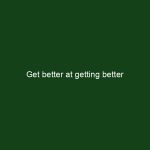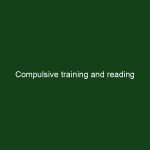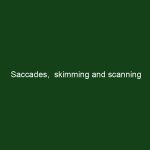Recently I read two articles describing complementary skillsets of getiing things done. The first article described life attitude required for getting things done, like not getting fear and controversy stop you and commitment to actually doing things. The second article described using flow and momentum to maximize performance and getting things done. These skills contribute …
Superlearning for programmers: learning new programming languages
When I first learned to program back in early 90s, I thought that knowing the grammar of the programming language is what I need. It took me excruciating week till I could use all MSDOS commands, “for” and “while” loops and some other grammar. I was ready to program! I decided to write a racing …
Continue reading “Superlearning for programmers: learning new programming languages”
Science behind Keytosudy methodology
This is supposed to be a short post. Quite often I am asked regarding science behind keytostudy methodology. We (Anna and myself) have conducted statistical research with thousands of students, but we could never afford a “control” group receiving a “placebo” method. We did not have sufficient access to fMRI to make enough images of …
Superlearning for young and old
We have students of all ages. Our intelligence changes with age, and what works for one age will not necessarily work for another. Typically our course works well for ages between 13 and 65, however it can be easily adapted for wider age ranges. Before age of 13 kids simply do not read fast enough …
Building timeline and visualizing history
A very small percentage of people (~2%) is born with extremely good autobiographic memory: they remember every student in their class and every event of their life. Yesterday I met some classmates whom I have not seen for 26 years. Some things remained the same, but one thing that changes was my perception of childhood. …
Continue reading “Building timeline and visualizing history”
Get better at getting better
The Japanese concept of kaizen includes getting better at getting better as a key ingredient to productivity. Kaizen can be loosely translated as a “good change”. For superlearner the change is a continuous process that optimizes our existence, a cycle of questioning, learning and implementation. In kaizen this cycle includes This kind of continuous improvement …
Compulsive training and reading
Quite often our students focus on HOW they read and not on WHAT they read. This focus may generate overload and reduce both reading speed and reading comprehension. Please try to do all the preparatory work during prereading, do all the performance analysis after reading, and concentrate on reading when you read. One way to …
Active reading: SQ3R system and preread-read-analyze cycle.
We teach our students to preread, read and reread without stating where we learnt it ourselves. To fix this injustice I introduce so called SQ3R system that is commonly used in US schools. Survey. We also call this prereading. Usually we skim or scan the content before we read it to prepare our mind for …
Continue reading “Active reading: SQ3R system and preread-read-analyze cycle.”
Subliminal reading
Some people (including me) generate visual markers without actual visualization. The symptomatic of subliminal reading is very interesting. By following reading speed, eye motion, association creation, reading progress and some other criteria both Anna and me can tell that the student uses visual processing of the text. The student reads fast and retains very well. …
Saccades, skimming and scanning
While the basic reading technique includes saccades, not everybody is sufficiently comfortable with saccading eye motion. There is a large amount of literature of scanning and skimming for specific purposes as complementary to reading. Specifically you can use both skimming and scanning for prereading, but also you can use the characteristic eye motion of skimming …











